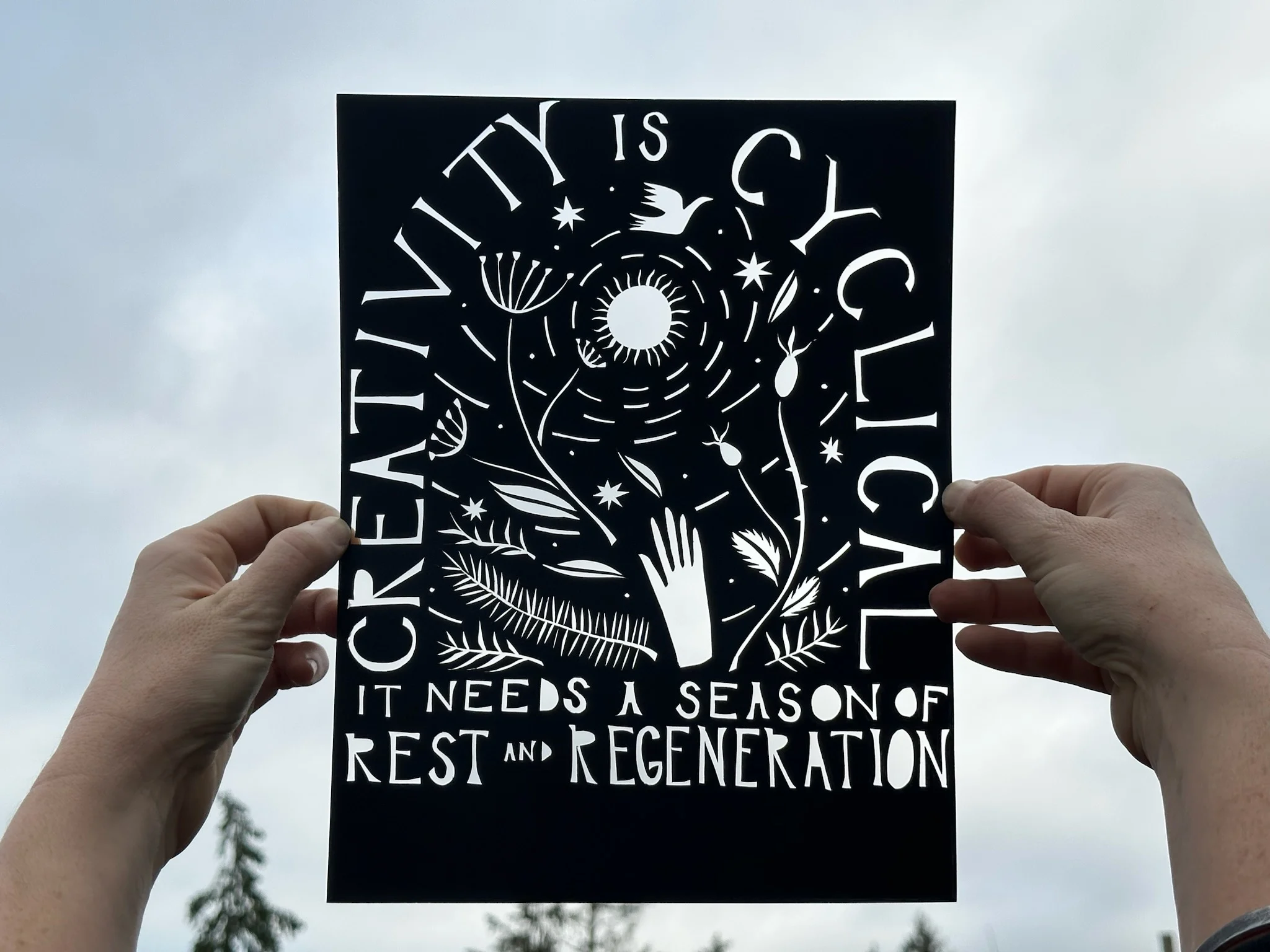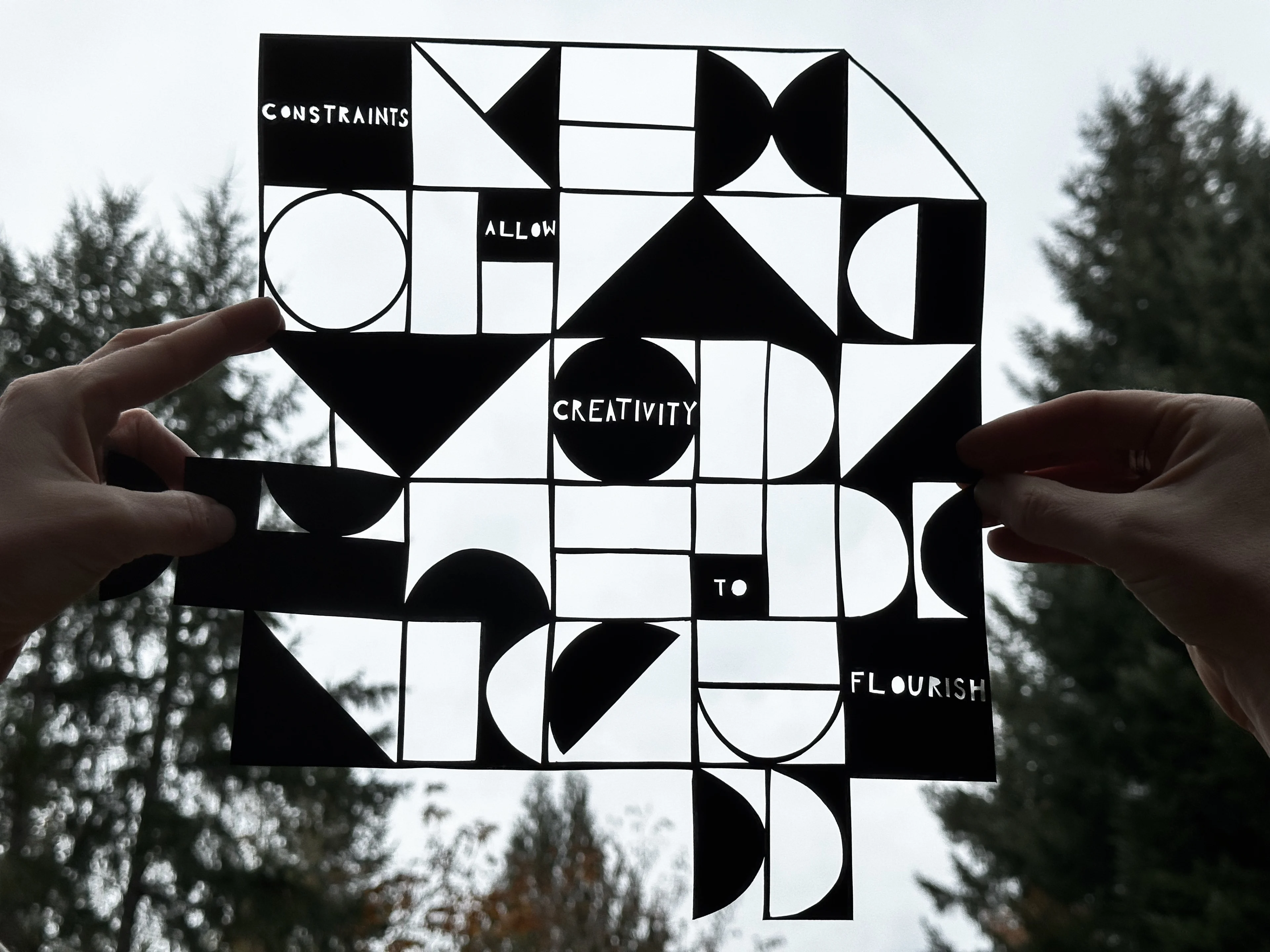The Creative Fuel Series: A Midwinter Call for Creative Reflection and Rest
- 21 December 2022
- ByAnna Brones
- 7 mins. read

For those of us in the Northern Hemisphere, we’re in the season of winter solstice. December 21, the day with the fewest hours of sunlight in the whole year, marks the astronomical start to winter.
Solstices and equinoxes mark a seasonal shift, a change in what’s happening around us. Winter solstice, while it marks the beginning of winter, is also a call for celebration, welcoming the light back.
These seasonal markers are a reminder of the cycles of nature—the shifts, transitions, and evolutions that are constantly ongoing. As we set aside time for our business reflections, our creative practice deserves some reflection as well, and this midwinter season is a call to do just that.
For those of us who are artists and creators, we are coming to the end of a season of output. Some of the constraints that have defined the last few months—holiday sales and markets, shipping deadlines, ongoing promotions—eventually begin to loosen. The frantic cycle of the holiday business season comes to a stop.
In the natural world, this season of midwinter represents a cycle of dormancy, a way for flora and fauna to survive harsh conditions. In the winter, nature doesn’t die off—it takes a rest to ensure survival. With shorter, darker days, we as humans feel tired, and it’s a cue for the natural world as well; the amount of darkness regulates growth hormones in plants, and shorter days help to tell trees that it’s time to stop growing, time to rest.
As Paul Theroux wrote in his essay The Wicked Coast, “Winter is a season of recovery and preparation.” Winter can be a generative space, one in which we pause in order to restore our creative practice. We can apply the lessons from the natural world to better inform our own creativity. It may not take the form of concrete seasons, but creativity is also cyclical. We have our highs and lows, and the rest of the time we are navigating somewhere between the two.
Coming to the end of this season of business output, midwinter asks our creative selves to turn inwards. To shift our focus to the inputs that fuel our creative process. The things that inspire us, the things that ground us, the things that restore us. Winter, after all, is a time for slowing down, a time to take a pause, a time to rest, and a time to reflect.
What regenerates when we give our creative work a break?
I think back to an episode of Elizabeth Gilbert’s podcast series Magic Lessons many years ago, in which she told a writer struggling to make progress on her second book that she should spend an entire month not writing. Basically doing anything besides the creative output work that she was focusing on doing. The result? After two and a half weeks of actively not writing, she finds that’s all that she wants to do.
This is not to say that we have to stop our creative work entirely. But what if we gave it some breathing room? A place of rest and a place of pause can allow us to renew the joy and spark in our creative practice.
We can use this cycle of winter to recommit to our creative process, not to drive a business output but to reinforce and restore a personal practice. Because even if creativity is the core driver of our business, I think it’s essential that we are able to separate our creative process from our work. After all, creativity is a part of who we are, not just what we do. We have to find a space for our creativity that isn’t output driven. We have to take the time to invest in our process. We have to feed creativity for creativity’s sake.
Over the last few years, I have often struggled with January. Coming off the hecticness of the end of the year makes the beginning of the new one feel slow. There’s usually not a lot of work on the horizon and it’s easy for the doldrums to set in.
I’ve found that the best way to counteract that is understanding the cyclical nature of my own work and creative process. Winter is not a time when I have a lot of creative output, but it’s a time of reading, experimenting, going on walks—all things that are inherently tied to the health of my overall creative process. Secondly, the midwinter time goes much better for me when I treat it as a time of regeneration. I don’t ask much of it; I allow it to be a time for ideas to marinate.
Creative dormancy doesn’t have to mean doing nothing. But it does mean taking a look at our creative process and identifying what it needs to be more resilient. Everything in our everyday lives can be fuel for our creative process, and winter is a time to recommit to that practice of creativity not as a job or as a method of output, but creativity as a way of living, as a way of being. It is an excellent time to ask the question, “who are you without the doing?”
To mark the winter solstice and the transition into winter, here are a few questions to guide your creative reflections:
How does creativity manifest in your everyday actions?
What does creative regeneration look like for you?
What do you want to let go of? What does that create more room for?
What aspect of creativity feels core to who you are as a person? How much time is that getting in your everyday life?
For many years I would attend a winter solstice party. There was an enormous bonfire, and we would each take a bough of cedar or Douglas fir to place on the fire. As we did, we verbalized what we were letting go of for the year and what we were welcoming in. It was a tangible way to put words to the darkness and the lightness, to honor both, and to be intentional about what we took with us moving forward.
Do the same for your creative practice. Let go of what you don’t need, and embrace what you want moving forward. Take time to pause–give your creative process the breathing room it needs.
As we transition into winter, remember this: creativity is cyclical. The best that we can do is to allow it to be just that.
For more inspiration, check out the Creative Fuel podcast. Its latest mini-episode on Winter Solstice Meditation is the perfect companion to this essay.
21 December 2022
Words by:Anna Brones
- Share
